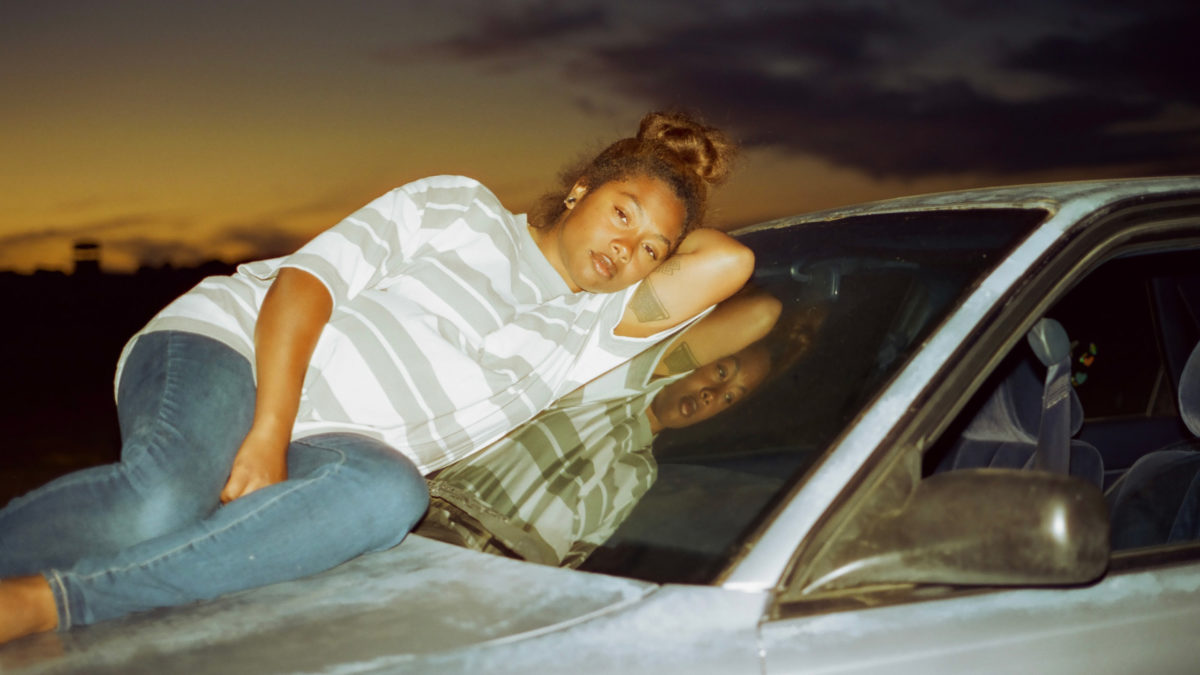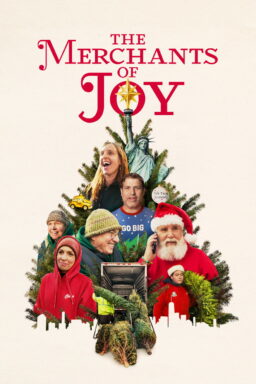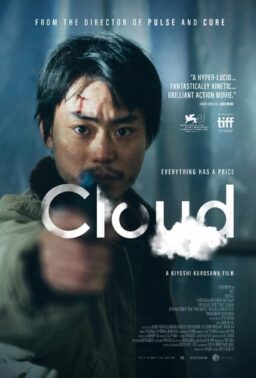When I was growing up, the consumption of girlhood on screen looked like “Mean Girls,” “Aquamarine,” “13 Going on 30,” and “Pretty Little Liars”: Stories about WASP-y teen girls navigating toxic friendships, vanity, and the guys who may or may not be interested. These oversimplified narratives of female coming-of-age are long cherished, nostalgic and fun for a rewatch. In contrast, the nuanced films hitting theaters today also reflect a welcome change, adding depth to a once-shallow genre. Still, the lens utilized by this new wave of films isn’t perfect. The faces on screen have remained largely the same. They’re all incredibly white. In contemporary cinema, where stories are expected to take on more than the surface aspects, Black girlhood continues to be bypassed.
In aesthetic, practice, and media, the theme of the last few months in particular has been girlhood. Because of the hyper feminine balletcore trend spearheaded by designer Sandy Liang, bows, lace, and flats have dominated fashion this year. TikTok trends like “girl math” have demonstrated humorous ways women justify purchases. If you pay cash, for example, it’s free. If you return something to the store and use that refund money to purchase something else, it’s free. “You don’t know me, but I know you” clips have been another emotional trend on TikTok. Women splice together portraits of themselves and other women in their ancestry to illustrate the perseverance of the social obstacles that bind womanhood across generations. These videos have dominated the platform. Women across all avenues are reflecting on the ways and means by which they’ve come to be, and this profound sense of sisterhood felt across social media has been bolstered by the takeover of feminine narratives on the big screen.
While Disney princess films have often served as a young girl’s introduction to feminine fantasy, it’s films like “Barbie” and “Poor Things,” consumed in young adulthood, that sell you on feminine realities. In the current femme boom, these so-called universal female experience films seem to almost inevitably host white faces at their fore. This isn’t to say that Black women won’t find truth and power in “Barbie” or “Priscilla,” but it does mean that once again we’re relegated to the familiar role of adopter, viewing white-centric films that position themselves as pundits of girlhood cinema, without seeing ourselves on screen.
The present girlhood renaissance centers itself on a more fearless, brutal depiction of the process of coming-of-age. These films pridefully dig into the macabre and uncomfortable, swapping “as ifs” for fear and timidity, awkward hilarity, and the plaguing self awareness inherent to the transition from girlhood to womanhood. Problems are no longer glossy and inconsequential. Instead, the troubling realization that you will always be fighting for agency in a world where your male counterparts are gifted it, is highlighted. The unflinching honesty of this lens is encouraged. And yet, this mainstream takeover of feminine stories still pushes Black girls to the sidelines at best, and the bleachers at worst.
The sidelining is especially nauseating considering the lexicon of this femme boom traces back to the trademark slogans of one of culture’s most prominent Black women, Megan Thee Stallion. “Real hot girl shit” and “hot girl summer,” in terms of chronology and impact, seem to be the etymological parents of “hot girl walks,” “girl dinner,” and the like. And while Megan coined these terms over five years ago, the offshoots of her language now dominate a cultural movement that treats Blackness as a subsidiary of its larger umbrella.

Greta Gerwig’s “Barbie” and Emma Seligman’s “Bottoms” were arguably the defining coming-of-age films of this year. While “Barbie” includes discussions of intersectionality, there’s a lack of self-awareness in the fact that it does little to actually put it into practice. Rather, the film is guided by Barbie (Margot Robbie) becoming aware of her own mortality. She leaves Barbie Land for the real world to discover who is playing with her. In doing so, she gleans the answers (and a solution) to her awakening, becoming sentient and enlightened to real-world gender politics. A similar transformation happens for Ryan Gosling’s Ken, who returns to Barbie Land with the knowledge of patriarchy, leading him to establish a Kendom.
Though the film’s base argument is tethered to ceasing the oversaturation of the blonde, white, and skinny prototype, it ultimately focuses more on dispelling bodily ideals and societal pressures than it does making an effort to highlight the Barbies of color as anything other than background. The film is very second wave, taking only gender into account as an oppressive factor, rather than the compounding influence of intersectional elements, including race. Though, to be fair, making Issa Rae the president of Barbie Land was probably a symbolic nod by Gerwig. It’s still a passive one. The mere mention of thoughtful inclusion is not the same as implementation. “Barbie” might have been successful in calling out the truths of girlhood, but the film’s nibbles at diversity are indicative of the fundamental limits of whiteness attempting to critique itself.
On its face, Seligman’s “Bottoms” would appear far more inclusive. Ayo Edebiri and Rachel Sennott split the screen as the film’s central co-stars, two teen girls who start a fight club at their high school in order to get laid before graduation. They concoct this scheme under the pretense of “female solidarity,” yet operate largely under the conditions of their own desire. Though Ayo’s Josie has more bullet points on her character’s arc than Sennott’s PJ, Josie is secondary in terms of the way she motivates the story. The film is driven by PJ’s actions. On the other hand, PJ’s decisions happen to Josie. Ayo’s character, in that regard, is still the Dionne to Sennott’s Cher as the best friend role and voice of reason many cinematic Black girls are forced to occupy. Meanwhile, Annie (Zamani Wilder), the other Black girl in the film, is host to the other habitual slot of comic relief, existing in the plot simply as a subversion of her Blackness due to her right-wing politics.

Along with being the best friend, comic relief, or both, Black girls are relegated to a third niche. They are often the site of trauma in high profile films like “The Hate U Give” and “Precious.” Even the newest version of “The Color Purple,” a musical adaptation of Alice Walker’s classic novel, relies on the same tension for character growth by reckoning with habitual rape and abuse. Despite also surveying the power of female solidarity and sisterhood, agony and violence remains central. While the Black experience is irrevocably tied to generations of pain, that historical reality is contextual, not synonymous. In other words, Black pain is not the monolithic measure of the Black experience that major studio films would lead you to believe.
The misplaced belief that Blackness must be bound to anguish and brutality discriminates against the diversity of what Black coming of age looks like. Black girls experience the same romantic, platonic, and self-esteem issues as white girls, but too often, the big budget treatment relies on a strong-armed element of racism or abuse to deem the films “authentic” or “poignant,” the punishing assumption that our stories are unique only by means of trauma. There is absolutely room for epic films of resilience like “The Color Purple,” or hilarious teen comedies like “Bottoms,” but when you’re hard pressed to find Black female leads who exist outside of the periphery, or without an omnipresence of strife, the lack is disconcerting.
Still, there are a couple of places where Black girls can find relatable, nuanced, and thoughtful stories. They exist in the indie sphere or on television. Two incredible chapters in Black girlhood canon, for instance, debuted this year: Savanah Leaf’s “Earth Mama” and Prime Video’s “Gen V,” a spinoff of the platform’s popular series “The Boys.” Both utilize horror aspects to depict the fear of a changing body and the consequences of exiting one stage and entering another. Set in the Bay Area, Leaf’s “Earth Mama” follows Gia (Tia Nomore), a young, single mother, presently pregnant, working to regain custody of her children from foster care. In “Earth Mama,” Leaf showcases beautifully haunting, surreal cutaways to montages of Gia’s pregnant body, her belly rolling and stretching in tandem with her fears and hesitancy as a young mother. The film is rife with love and resilience coexisting with harsh realities of Black girlhood: judgment from peers, underfunded social resources, and the misogynoir that comes with being a young Black mother.

“Gen V” follows young superheroes training their powers and building their brands at a university for supes. It contains all the usual college-age maturation themes, like newfound independence, partying, and sex, and combines it with the precarious implications of supernatural abilities and recklessness. The series’ Marie Moreau (Jaz Sinclair) doesn’t come into her powers until she gets her first period. It’s an event marked not only by blood, but crippling loss, fear, and newfound identity, and at the moment, she doesn’t understand what’s happening. Locked in the bathroom, quivering with terror and trying to grasp for clarity, her body takes over, forcefully commanding its authority and thrusting her into the next stage against her will. While Marie’s losses are tangible, they’re also contextually significant to the tyrannical takeover of girlhood and the task of learning to adapt into the woman you must become.
Though these incredible examples of Black girlhood are important, both “Earth Mama” and “Gen V” are marketed and created for adult audiences. What is left is a glaring gap between representation targeting Black children and media aimed at older teens and adults. Where are the films for girls too old to keep “The Princess and the Frog” in rotation, and too young to appreciate the nuance and social commentary of “Earth Mama” or witness the raunch-fest that is “Gen V?” When it comes to finding diverse coming-of-age stories for young teens, you often have to dig another level down, past theater releases or big production companies and into the soil of less marketed, straight-to-digital cinema.
“The Fits” or “Miss Juneteenth” are nestled in the sweet spot of Black girlhood. They are films about young teens for young teens. Both are stunningly creative, emotionally affecting, and relatable dossiers on the experience of Black girlhood. Toni (Royalty Hightower) and Kai (Alexis Chikaeze) respectively, are also the leads of their films. And yet, the everyday Black girl, not tapped into the cinemasphere, is unlikely to see their trailers in ads before YouTube videos or promoted within TikTok or Instagram feeds. These films require searching.
Even as Hollywood sets their sight on girlhood, whiteness is sustained as the default perspective. To not be on screen is to not be seen and recognized by one of the largest industries in the world, and the connotation of that oversight is violent. It recalls bell hooks’ seminal essay, “The Oppositional Gaze: Black Female Spectators,” wherein hooks considers how the erasure of Black women from mainstream cinema informed the early-80s wave of Black independent women filmmakers. “For black female spectators who have “looked too deep” the encounter with the screen hurt. That some of us chose to stop looking was a gesture of resistance, turning away was one way to protest, to reject negation.”

It’s why the joy witnessed in seeing young Black girls rejoice in “The Princess and the Frog,” and more presently, in “The Little Mermaid,” is a sight that should not be relegated to the frequency of few and far between. For Black girls and women growing up, encountering and overcoming new obstacles, acknowledgment and care from the storytelling machine of Hollywood has an immeasurable influence on self esteem, self care, and collective empathy. It’s an affirmation of visibility.
For Black women to carve their own spaces via creating films in the indie sphere, in other words, to build their own table rather than waiting for a seat, is still critical. It’s a beautiful testament to our resilience and solidarity, and not a peripheral accomplishment. But still, as much as Black female spectators deserve big screen representation and easy means of feeling seen, so do the filmmakers. To be consigned to building from the ground up while others freely benefit from an already established industry is a familiar snub, but as long as the fight for diversity is demanded, and as long as studios and pop culture applaud it as fulfilled, it must be called out.
White feminism is a familiar beast, and the current femme boom is simply a remixed edition: a mutated form of a pre-existing condition. As much as films like “Barbie” and “Bottoms” throw lines in the script to parody White feminism’s dated philosophy, its presence in the core of their structure is sighfully ironic. Black girls still exist either in the wings or in stereotypical narrative slots while white girls remain center stage. Self-aware quips and half-baked winks at “Black girl magic” are thrown bones, not meaningful representation. There is no true feminist lens without Black stories, and until we too are at the fore of films spotlighted and not searched for, the femme boom is not only incomplete, but willfully blind.












